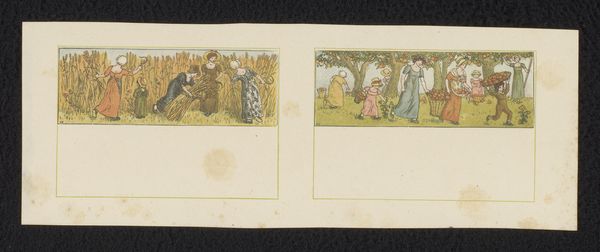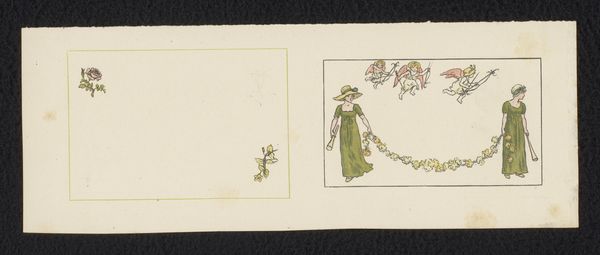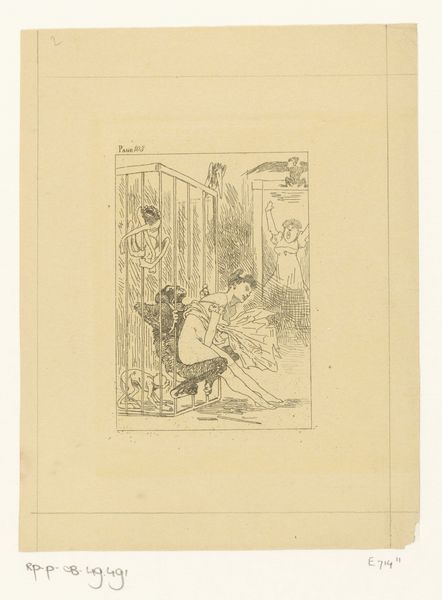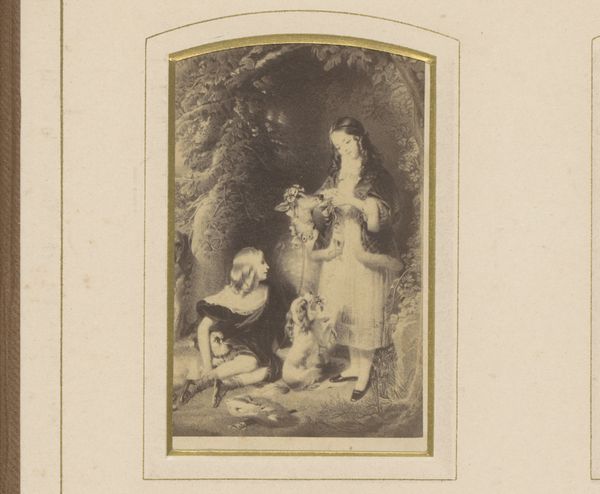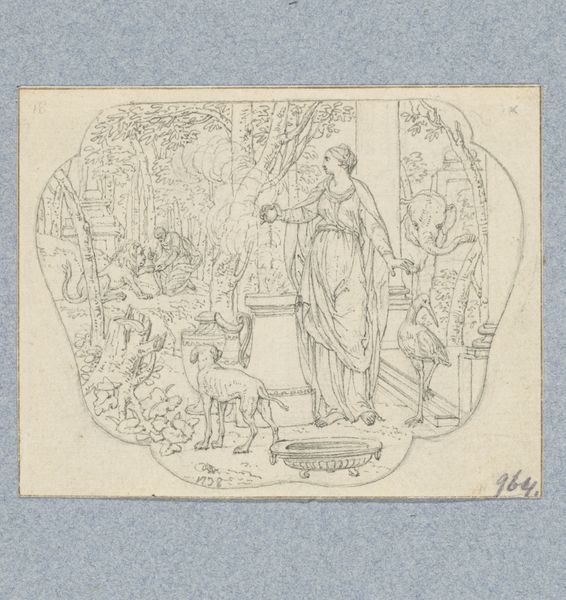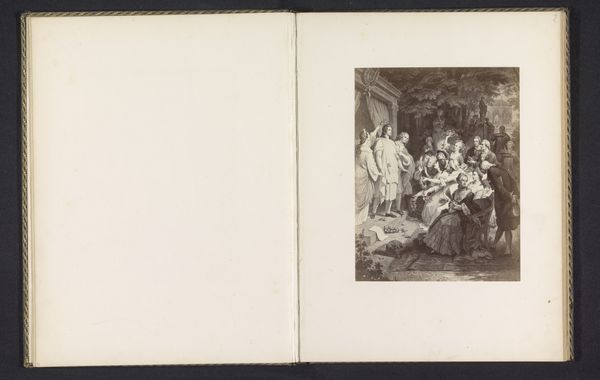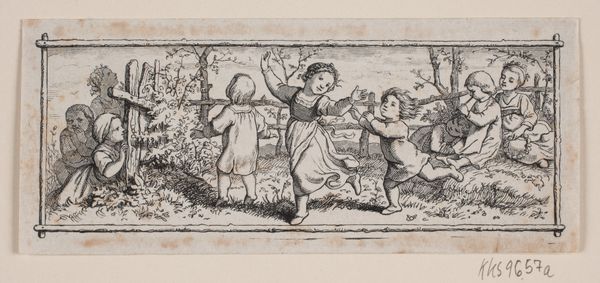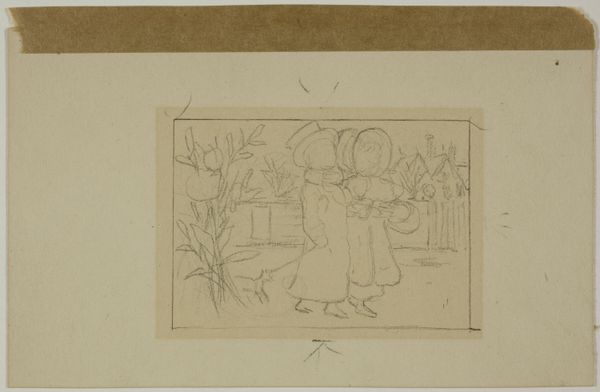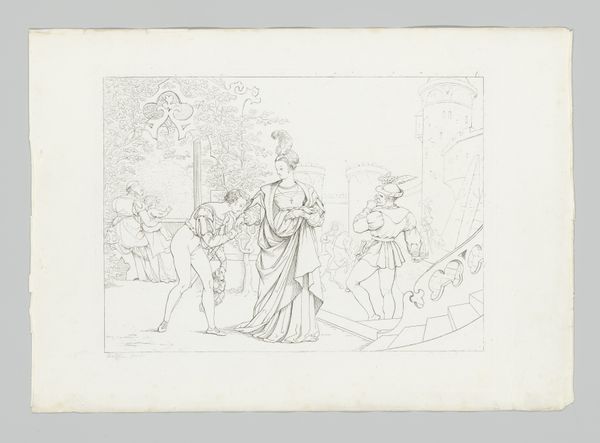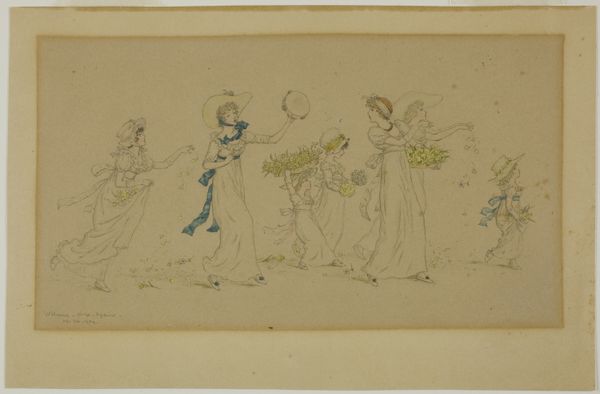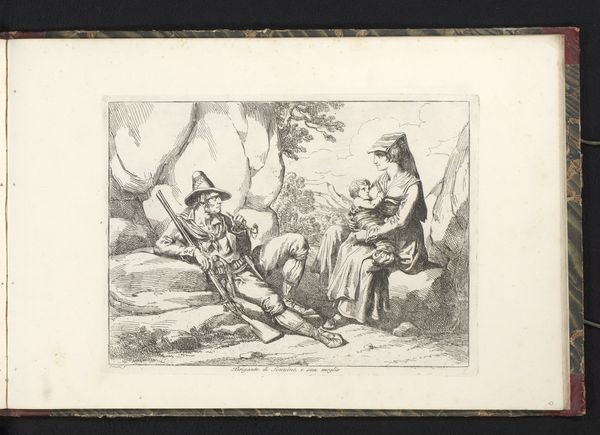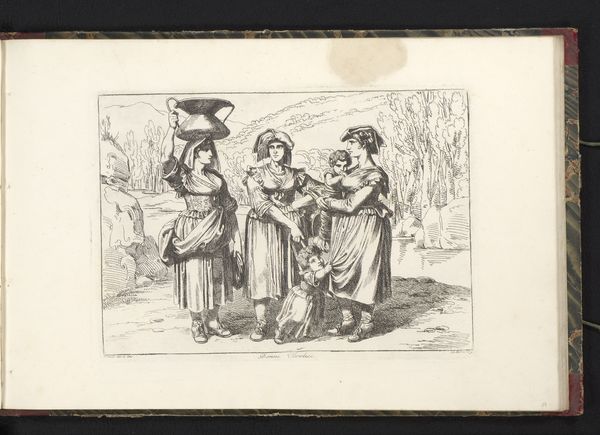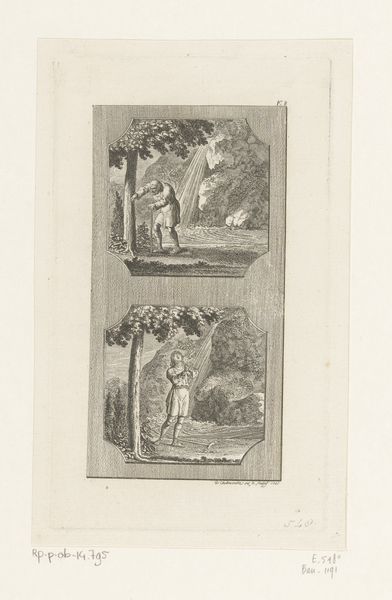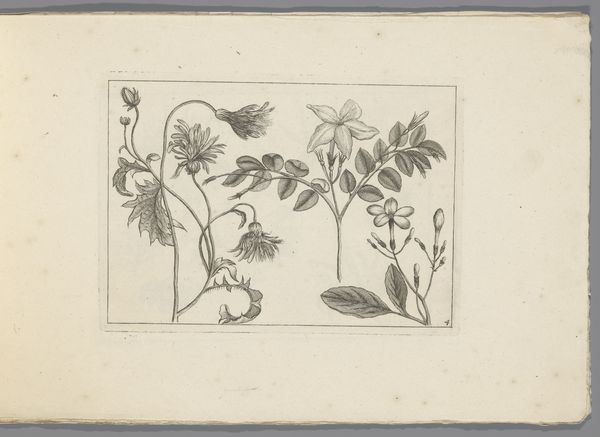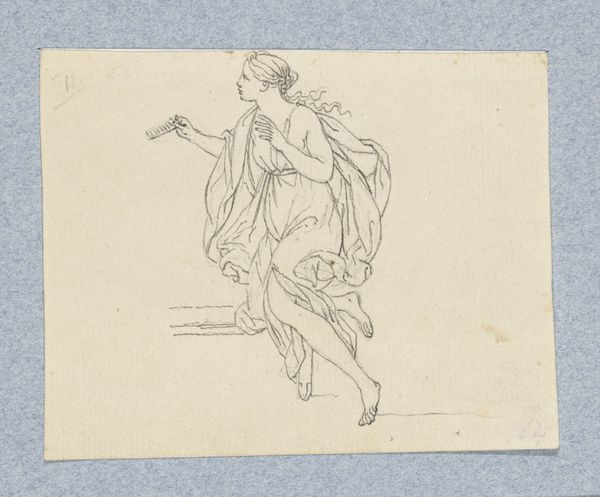
Dimensions: height 83 mm, width 220 mm
Copyright: Rijks Museum: Open Domain
Curator: This is “Vijf proefdrukken voor de Almanack for 1887,” or “Five Proof Prints for the Almanac for 1887,” dating from before 1886. Editor: My first impression is whimsical, almost dreamlike. The delicate lines and soft watercolors give it a light, airy feel, despite the defined composition. Curator: Absolutely. Looking closely, we see it’s an ink and watercolor drawing on paper. Note how the medium itself contributes to the sense of craft; these materials suggest personal use, perhaps a domestic setting? Were these designs for a specific market, or something more intimate? Editor: The image depicts women and girls holding hands, dancing in a circle under blooming trees. This imagery immediately suggests ritual and community, particularly amongst women. Think about the historical role of women gathering in circles for everything from childcare to shared labor and resistance. This could also signify the cycle of the seasons or a rite of spring. Curator: Interesting point! I am drawn to how this piece straddles the line between high art and a more quotidian design. The use of drawing and watercolor connects it to established artistic practices, while its intended function as an almanac illustration grounds it in the world of print production. The method is clearly hand-drawn; was this widely available? How would it be circulated? Editor: The artist chooses to depict women in harmony with nature and each other, and these visual motifs reinforce contemporary discourses about the female body and its connections to the natural world. There's also a sense of idealized femininity and youthful joy—or perhaps commentary on limited access to leisure time and safe environments? Curator: I wonder about the artist's role. Were they challenging or conforming to expectations in terms of labor and art production? There are other floral sketches bordering the central image...almost acting as space-fillers, contrasting with the action of the central panel. The interplay between utility and decoration complicates easy categorization. Editor: Agreed. Its purpose might seem simply decorative on the surface, yet this miniature provides glimpses into cultural attitudes regarding gender and society within its historical context. The intentional presentation allows us to investigate social narratives while enjoying the craftsmanship that went into this particular artwork. Curator: It's fascinating to consider this artwork, therefore, as both an aesthetic object and a piece of commercial design. It leaves us to ponder questions about production and social function, just like all good art. Editor: Indeed. It serves as a reminder that even seemingly simple images are steeped in complex historical, social, and political meanings.
Comments
No comments
Be the first to comment and join the conversation on the ultimate creative platform.
